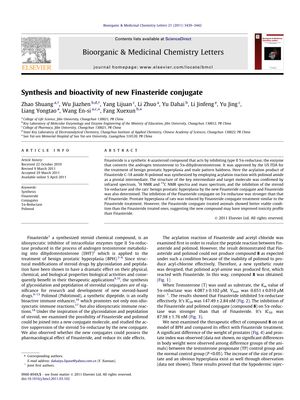TLDR New Finasteride conjugate improves prostate treatment and vital signs in rats.
The study aimed to develop a new Finasteride conjugate for the treatment of benign prostate hyperplasia (BPH). The new compound showed better inhibition of 5α-reductase activity in vitro and improved outcomes in vivo in a rat model with BPH. The rats in the Finasteride conjugate group also showed better vital signs than those in the Finasteride group. The results suggest that the Finasteride conjugate may have other functions on animals than Finasteride, possibly with improved immune response or reduced toxicity. Further research is needed to investigate the immune modulation activity of the Finasteride conjugate and compare it with Polimod.
219 citations
,
October 2009 in “Steroids” 5α-reductase inhibitors, like Finasteride and Dutasteride, help manage benign prostatic hyperplasia.
42 citations
,
May 2007 in “Endocrinology and metabolism/American journal of physiology: endocrinology and metabolism” Testosterone can build muscle and bone without enlarging the prostate when a specific enzyme is blocked.
 52 citations
,
February 2006 in “Current pharmaceutical design”
52 citations
,
February 2006 in “Current pharmaceutical design” 5α-reductase inhibitors and alpha-1 adrenergic antagonists together effectively treat benign prostatic hyperplasia, with long-term benefits.
 1054 citations
,
February 1998 in “The New England Journal of Medicine”
1054 citations
,
February 1998 in “The New England Journal of Medicine” Finasteride reduces urinary issues and surgery need in men with enlarged prostates by over 50%.
 3 citations
,
October 1995 in “International Journal of Dermatology”
3 citations
,
October 1995 in “International Journal of Dermatology” Finasteride helps treat skin issues like acne and baldness by blocking testosterone conversion.
 30 citations
,
August 1992 in “The Journal of Clinical Endocrinology and Metabolism”
30 citations
,
August 1992 in “The Journal of Clinical Endocrinology and Metabolism” Finasteride doesn't affect hormone levels in normal men.




